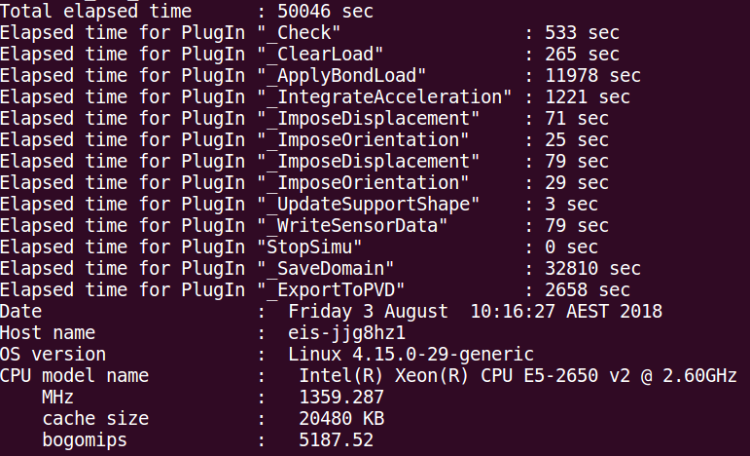Hello,
I would like to ask about the parallel computing. Normally, I only set the "ThreadNumber" in the first line of input file:
<GranOO Version="2.0" TotIteration="10000000" OutDir="..." Verbose="No" ThreadNumber="16">
However, the speed when "ThreadNumber=16" or "ThreadNumber=1" are not really different, so I think I must do something wrong in setting parallel computing in GranOO:


Do I need to set "ThreadNumber" in every plug-in ? Or what else should I do to make use of parallel computing ?
Thanks and regards,
Vinh
Do Xuan Vinh Nguyen
PhD Student,
School of Mechanical, Materials, Mechatronic and Biomedical Engineering,
Faculty of Engineering and Information Sciences,
University of Wollongong, New South Wales, Australia